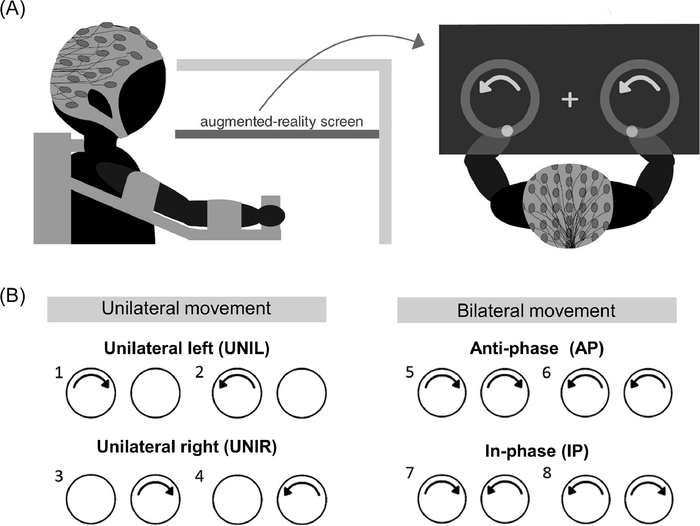A team of researchers from Max Planck Institute for Human Cognitive and Brain Sciences (Leipzig) has discovered that the age-related decline in bilateral anti-phase movement is linked to differences in alpha and beta neural activity. Among the researchers was Vadim Nikulin, Leading Research Fellow of the Centre for Cognition & Decision Making at HSE University.

Credit: Shih P., Steele C. J., Nikulin V. et al.
A team of researchers from Max Planck Institute for Human Cognitive and Brain Sciences (Leipzig) has discovered that the age-related decline in bilateral anti-phase movement is linked to differences in alpha and beta neural activity. Among the researchers was Vadim Nikulin, Leading Research Fellow of the Centre for Cognition & Decision Making at HSE University.
The research, entitled ‘Alpha and beta neural oscillations differentially reflect age-related differences in bilateral coordination’ has been published in the journal Neurobiology of Aging.
Bilateral coordination is the ability to coordinate the left and right sides of the body while in motion—an essential skill in everyday life. Those with impaired bilateral coordination can have difficulty with tasks such as clapping their hands or opening jars.
There are two types of coordination: in-phase and anti-phase. During in-phase movements (such as catching a ball with both hands), the same muscles on both sides contract synchronously. During anti-phase movements (such as moving both arms to the same side at once), the muscles contract in an alternating fashion.
Aging has been linked to a decline in bilateral coordination, particularly anti-phase coordination. The researchers proposed that age-related changes in in-phase and anti-phase coordination in older people are related to the fact that these processes are controlled by different mechanisms in the brain linked to neural oscillations.
To test this hypothesis, the researchers conducted an experiment using electroencephalography (EEG). The participants comprised 25 younger subjects with an average age of 26, and 25 older subjects with an average age of 70.
Illustration of the experiment. The subjects’ arms were placed under a transparent table. Images of arm movements were projected onto the table for the subjects to copy.
Source: Shih P., Steele C. J., Nikulin V. et al.
The subjects sat at a transparent table featuring a depiction of one out of eight possible circular arm movements. They were able to see their arms under the table. The subjects were asked to repeat a circular motion shown on the screen in time with a metronome. Two of the eight possible motions were in-phase and two were anti-phase. The remaining four motions required the use of one arm only. The researchers used multichannel EEG to record the subjects’ brain activity.
The researchers discovered that compared to the younger group, the older subjects displayed lower synchronization between different sides of the body during anti-phase movements. This explains why, for example, it becomes more difficult to perform such movements with age.
Decreased synchronization during anti-phase movements was also linked to differences in brain activity while performing the movements. In younger subjects, the power of alpha waves in the right, non-dominant hemisphere of the brain decreased less during in-phase movements than during anti-phase movements. In older subjects, the power of alpha waves fell by the same amount during both types of movement.
It is suggested that the power of alpha waves is linked to the level of active involvement in solving the given task. The lack of reduction in this power in the non-dominant hemisphere may reflect a compensation for the loss of these skills in older subjects, for example, that they need to more actively concentrate on the tasks.
Comparable differences were observed between the power of beta waves in both age groups. In the younger group, beta waves decreased equally with both types of movement, while in the older group, beta waves fell more during anti-phase movements than during in-phase movements. This greater decrease may also reflect the need for additional processing of sensorimotor information during anti-phase coordination.
Vadim Nikulin, Leading Research Fellow of the Centre for Cognition & Decision Making
‘Neural changes occur in the early stages of various pathologies of the brain. EEG measurement during bilateral movements could potentially uncover the early development of motor disorders, such as for instance Parkinson’s disease.’
Journal
Neurobiology of Aging
DOI
10.1016/j.neurobiolaging.2021.03.016
Article Title
Alpha and beta neural oscillations differentially reflect age-related differences in bilateral coordination
Article Publication Date
1-Aug-2021




